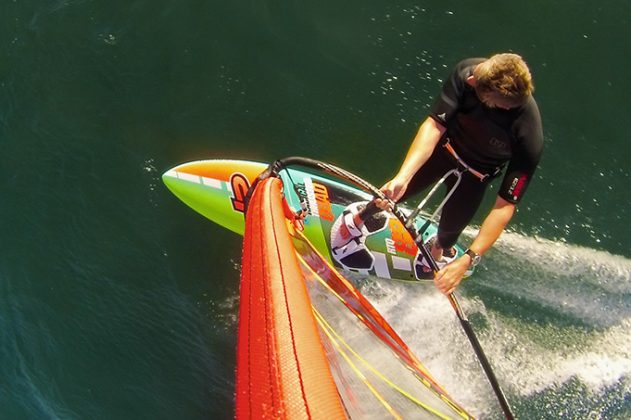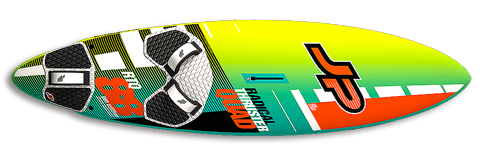
JP AUSTRALIA RADICAL THRUSTER QUAD 88L 2017 TEST REVIEW
JP AUSTRALIA RADICAL THRUSTER QUAD 88L 2017 TEST REVIEW
THE LOW-DOWN
JP’s Radical Thruster Quad series was introduced in 2016, adapted from its predecessor, the Radical Quad, by adding a central finbox to each size in the range. In addition, the 88 was introduced into the line-up and along with its four other siblings, remains current for 2017. Available solely in Pro Edition construction, using S-Glass technology with stringers and carbon rails incorporated, what is new for this season is the fact that each board is supplied with resin transfer moulded (RTM) fins – increasing performance by reducing weight. At face value, the most standout design feature of the 88 is its wingered rear – wide in front of the rear strap (intended to provide more surface area and early planing), leading to a super narrow and thin tail for “radical turns”. There are also some deep concaves in the hull of the RTQ, most pronounced under the straps, where the raised central vee helps to create a long flat planing section through the middle of the board. Supplied with JP’s tried and tested straps and 10mm dual density deckpads, it certainly looks the part, dressed in its bright eye-catching livery.
BRAND CLAIM
“According to our pro riders, you won’t find any better board for real down-the-line wave riding! You’ll be blown away by your high speed carving top and bottom turns. The board provides all the needed grip, control and liveliness throughout your wave moves. Every advanced waverider will simply love them as they take his riding to the next level. Go and get radical!”
PERFORMANCE
Despite possessing dimensions comparable to the rest of the boards in the group, the JP does feel relatively narrow as we stepped on it for the first time, largely due to the significant dome in its deck leading to thin tapered rails. Nonetheless it remains stable at idle, the volume distributed evenly throughout its length, making it balanced and easy for carrying a 5.7m and bogging out over white water. As the wind increases the 88 did seem to require a little more input and energy than some in the group to release, yet turn it off the wind and it responds in earnest, accelerating up to rapid top speed. JP’s fittings have always seemed to provide an excellent connection to the board, and this RTQ is no exception, the straps feeling super comfortable, holding the side of the rider’s feet, whilst the thick pads absorb any impact as you travel over harsh chop. Feeling compact and supremely controllable as you plough more energy into it, the 88 seems to lap up all you can throw at it, remaining lively and poised, ready at your command. And it is on the wave face that the JP really made its presence known. In clean cross-offshore conditions, it was simply a revelation, providing so much speed, agility and feel in the turns. Requiring little force or encouragement from the rider, the turns just seem to flow, with bottom and top turns connecting seamlessly as the board transitions instantly from rail to rail. You seem to be able to alter the turning radius by telepathy, the board so in tune with your style, rewarding the more assertive style with turns that you used to dream of. We did use the JP in cross onshore conditions as well and whilst it wasn’t as electric as in cross-offshore conditions, its drive and confidence on the rail meant that its performance was by no means a let down. If we had more time, it would have been well worth trying the RTQ with a different fin setup to see if we could extend its cross-on potency.
THE VERDICT
The JP RTQ 88 is a wave shredding thoroughbred most at home in a cross or cross-offshore arena, where its carving flow and response seem almost supernatural.
Other sails in this test:


